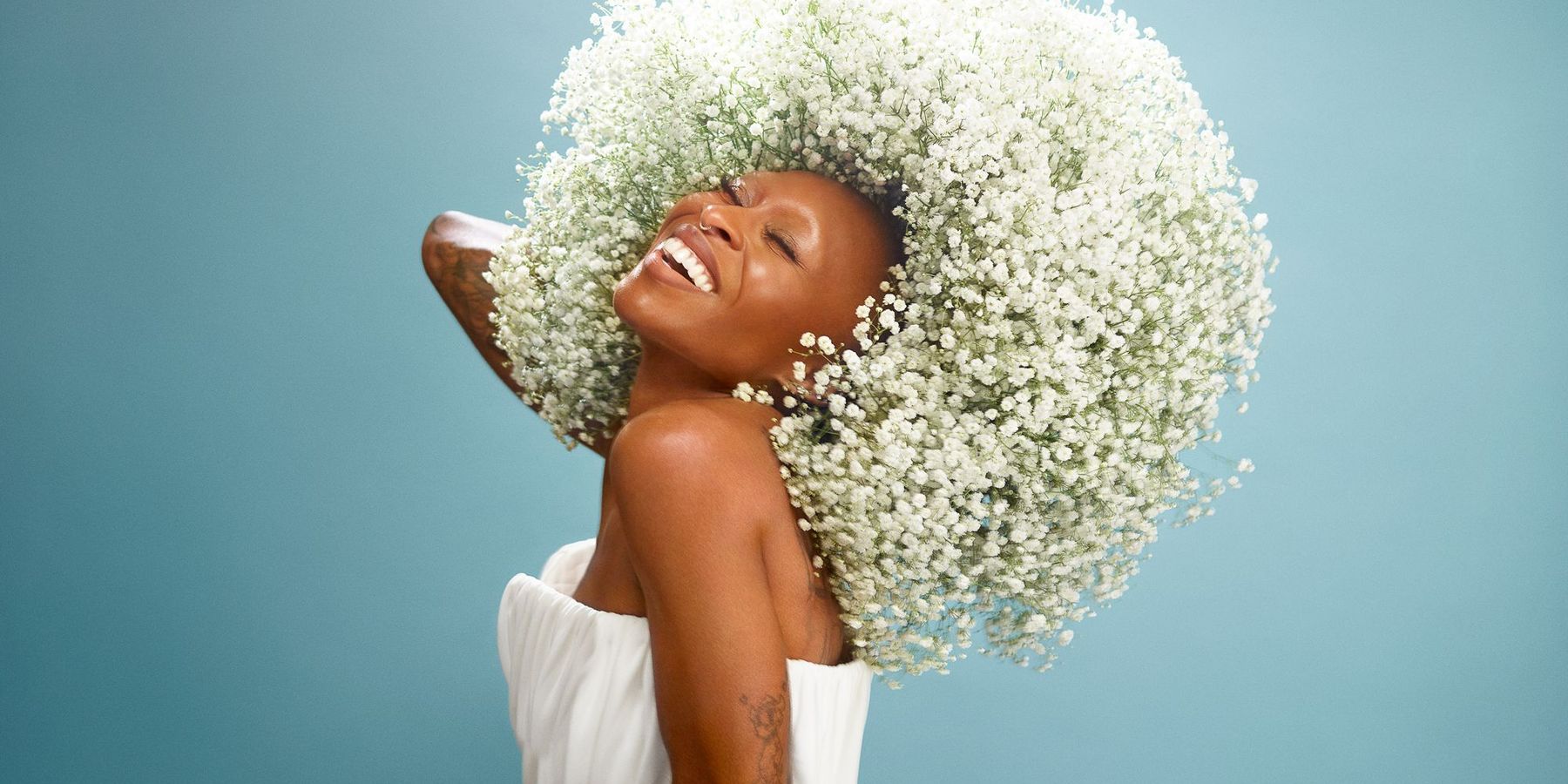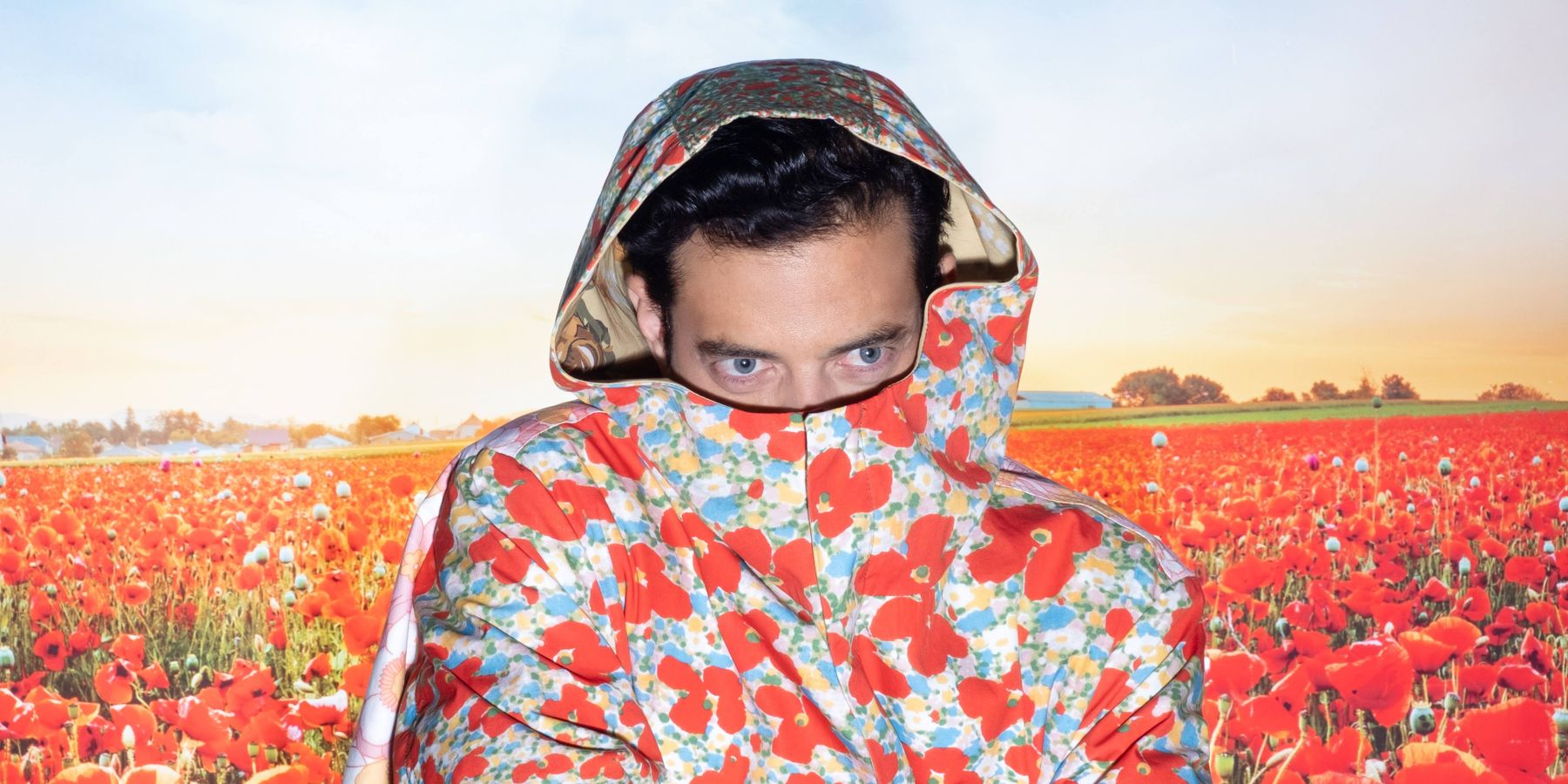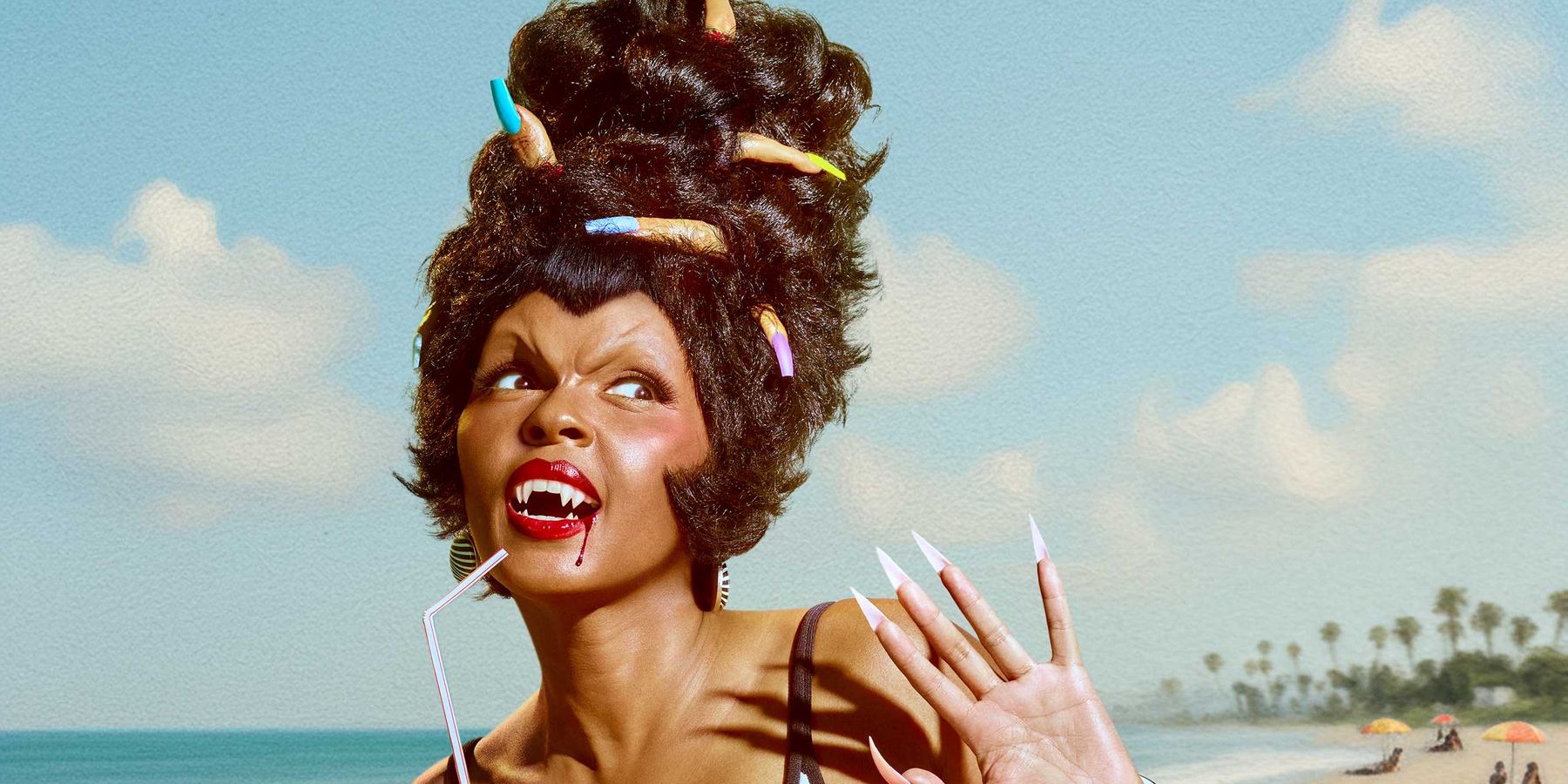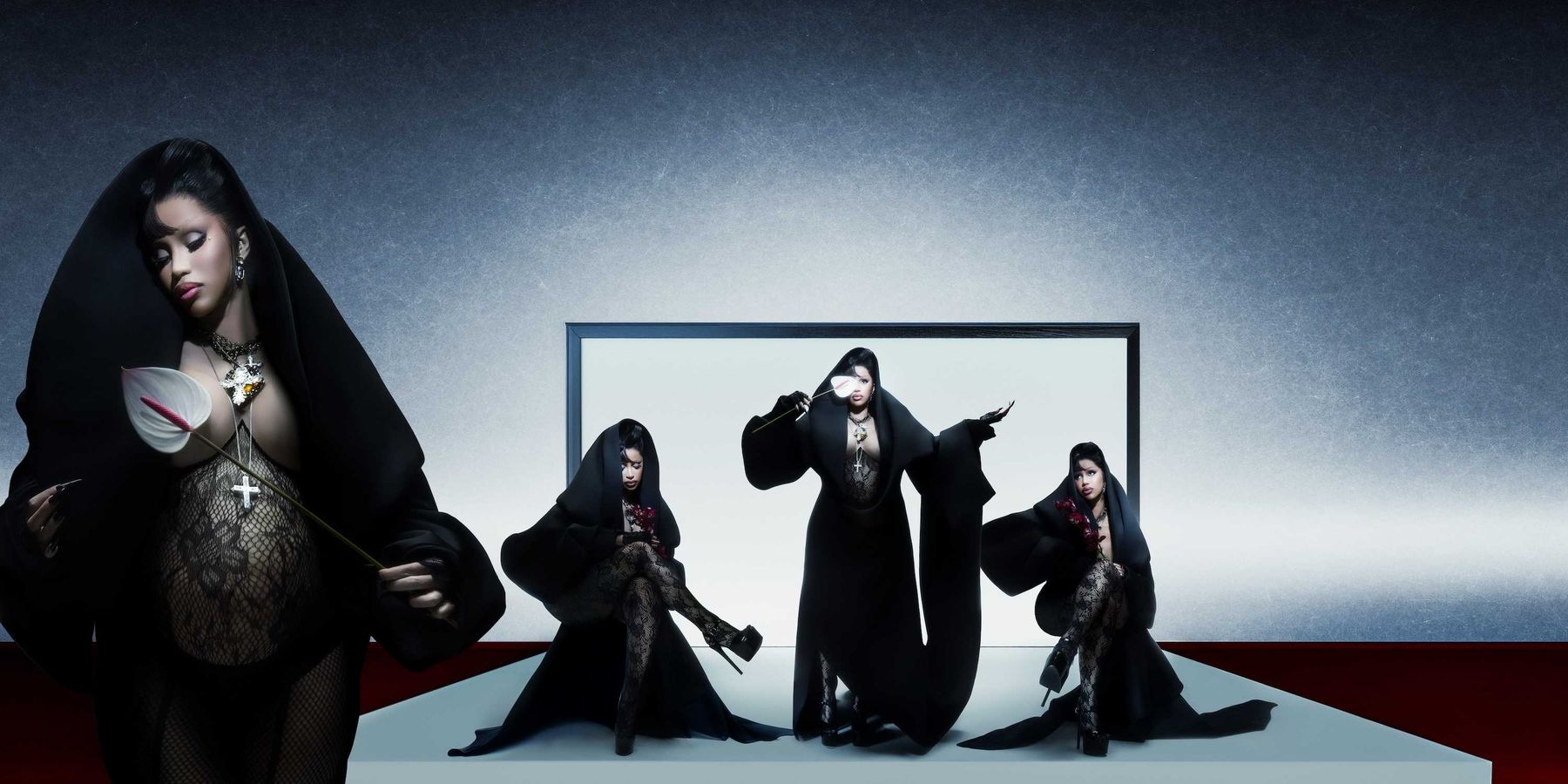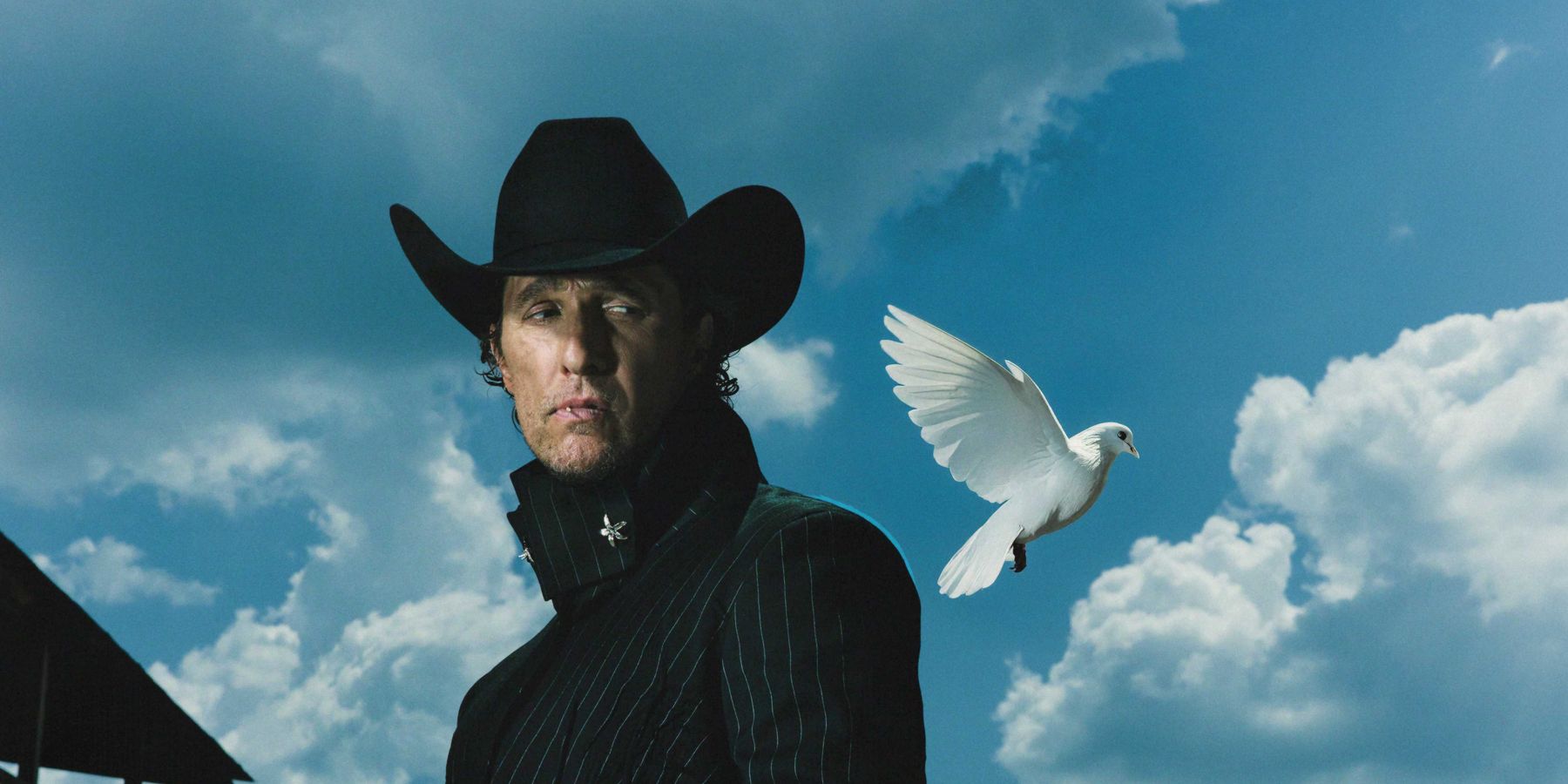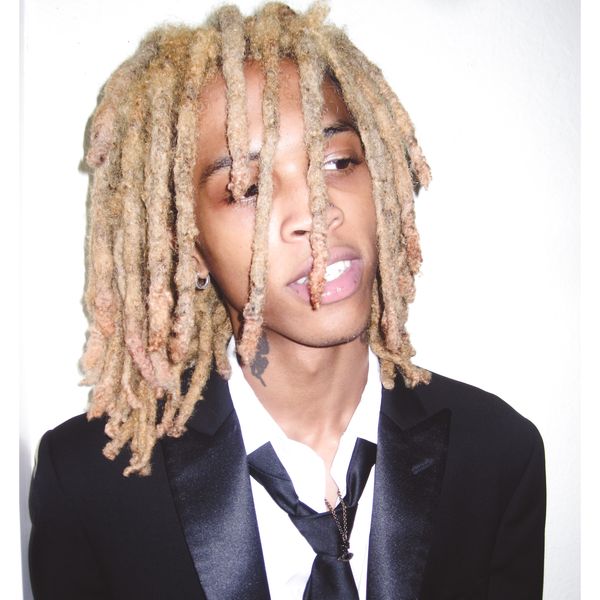
Prettifun Wants to Make Rap Fun Again
By Ivan Guzman
Sep 25, 2025Michael-Raymond Javier Taylor, better known as Prettifun, was still stocking bananas at his local Food Lion when his beats started taking off online. He’d clock out of late shifts in Charlotte, North Carolina, exhausted from cleaning up produce aisles, only to log onto Discord and lose himself in hours of music. “Around the time I made ‘Miley Cyrus’ and ‘Pizza Time’, it felt insane — I was in a blur, working nonstop,” he tells PAPER.
The blur began long before the 20-year-old’s first viral moments. Born and raised in Charlotte, Prettifun grew up lower middle class, with “two families in one household, still trying to work to pay the bills.” Days were spent outside in the city’s greenery or inside glued to video games and pop culture of the early 2000s and 2010s. Music ran deep in his household: his mom sang, his dad and brother rapped, and his brother once had him scribbling rhymes on cardboard before he even understood why. By 13, discovering music on his own, he knew it would shape his life.
Though his mother spun artists like Fantasia, Ciara and Aaliyah, Prettifun says their impact wasn’t just sonic but emotional. “Listening to Fantasia, I learned a lot about how to talk about emotions through my music,” he says. Later influences like Pi’erre Bourne helped him bridge that R&B sensibility with rap, focusing on relationships and love.
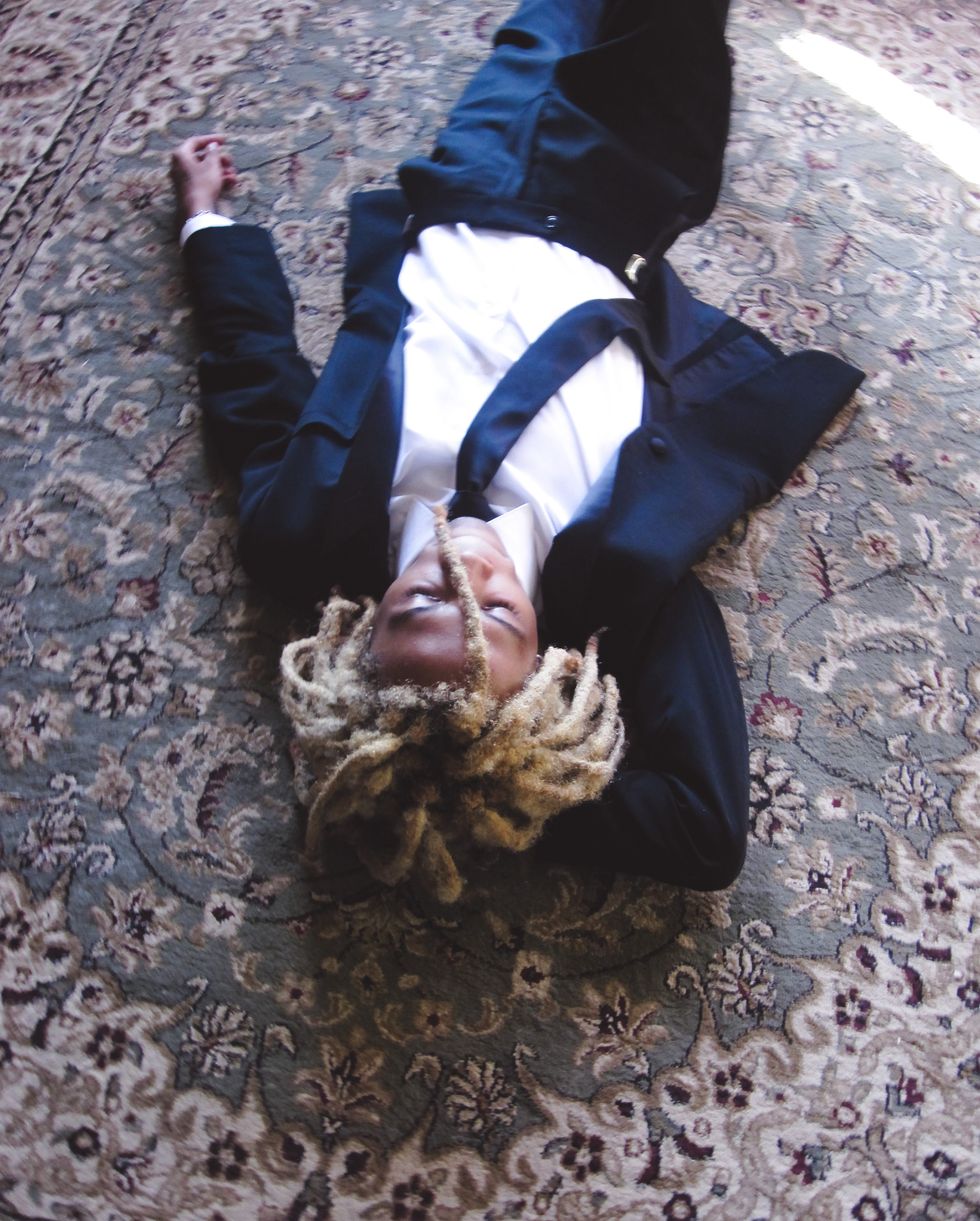
As a producer first, he learned rhythm and melody by building beats for others, eventually turning inward. “Beats need space so an artist can actually make a song out of them,” he says. When he began rapping, he already knew which beats he wanted to inhabit — and could make them himself. That control helped him develop a sound both playful and deeply personal, culminating in 2024’s FunHouse. “I could only rap about what I was going through,” he says. “That’s why it feels so personal.”
If there’s a philosophy running through Prettifun’s work, it’s the idea of fun — though not always in the obvious sense. “Fun doesn’t always mean colorful or positive,” he says. “It can just mean the creativity behind it makes it engaging.” Still, he gravitates toward brightness, in both sound and visuals, challenging himself to push past the darker minimalism of the underground scene.
Looking ahead, he imagines producing for others, releasing more projects and eventually hosting a hometown festival in Charlotte, building the infrastructure he wishes existed when he started. Until then, he’s busy shaping a colorful and fun world of his own.
We caught up with Prettifun to talk about his roots, his influences, and his vision for the future.
I love your producer tag. For our readers who might not know much about you, can you tell us a little about yourself — where you came from, where you grew up, who you are?
I was born and raised in Charlotte, North Carolina. It’s an interesting place in the Deep South. Now it feels more like a mini version of ATL, with so many people moving here, but growing up it was pretty decent. We were lower middle class — two families in one household, still working to pay the bills. A big part of my childhood was going outside. Charlotte has buildings in one part, but it’s surrounded by nature and greenery, and that’s where I spent most of my time. When I wasn’t outside, I was inside playing video games or watching a lot of pop culture media in the early 2000s and early 2010s. That influenced me a lot. I didn’t really start listening to music on my own until I was 13 or 14, and everything changed from there. I realized I had a strong affinity for it. Music also runs in my family. My mom was a singer, my dad and brother rapped, and my brother even had me writing raps on cardboard when I was younger. I didn’t fully understand it back then, but looking back I see how much it shaped me.
I saw that your family introduced you to artists like Fantasia, who I love. You also mentioned Ciara and Aaliyah. You were surrounded by that kind of musical influence growing up, but those artists sound pretty different from the music you make. Do you think they shaped your sound or your vibe?
When you think about artists like Fantasia, I first encountered that music through my mom. Maybe she was going through something at the time, and she’d be in her bag, playing those songs. It was very emotional music, and I learned a lot about how to talk about emotions by listening to her and other R&B artists. Once I started listening to music on my own, artists like Pi’erre Bourne really helped me figure out how I wanted to talk about relationships and things I was going through in my personal life. Growing up with singers like Fantasia definitely made me want to talk about love a lot in my music.
You’ve said you want to make rap ‘fun’ again. What does that mean to you in practice?
Fun doesn’t always mean a positive, colorful image all the time. It can just mean the music is interesting, or that there’s a whole world built around it that makes it engaging. The creativity itself can make something fun. So whatever I do, I just want to make sure it’s enjoyable — whether that’s through the sound, the visuals, or the world around the music.
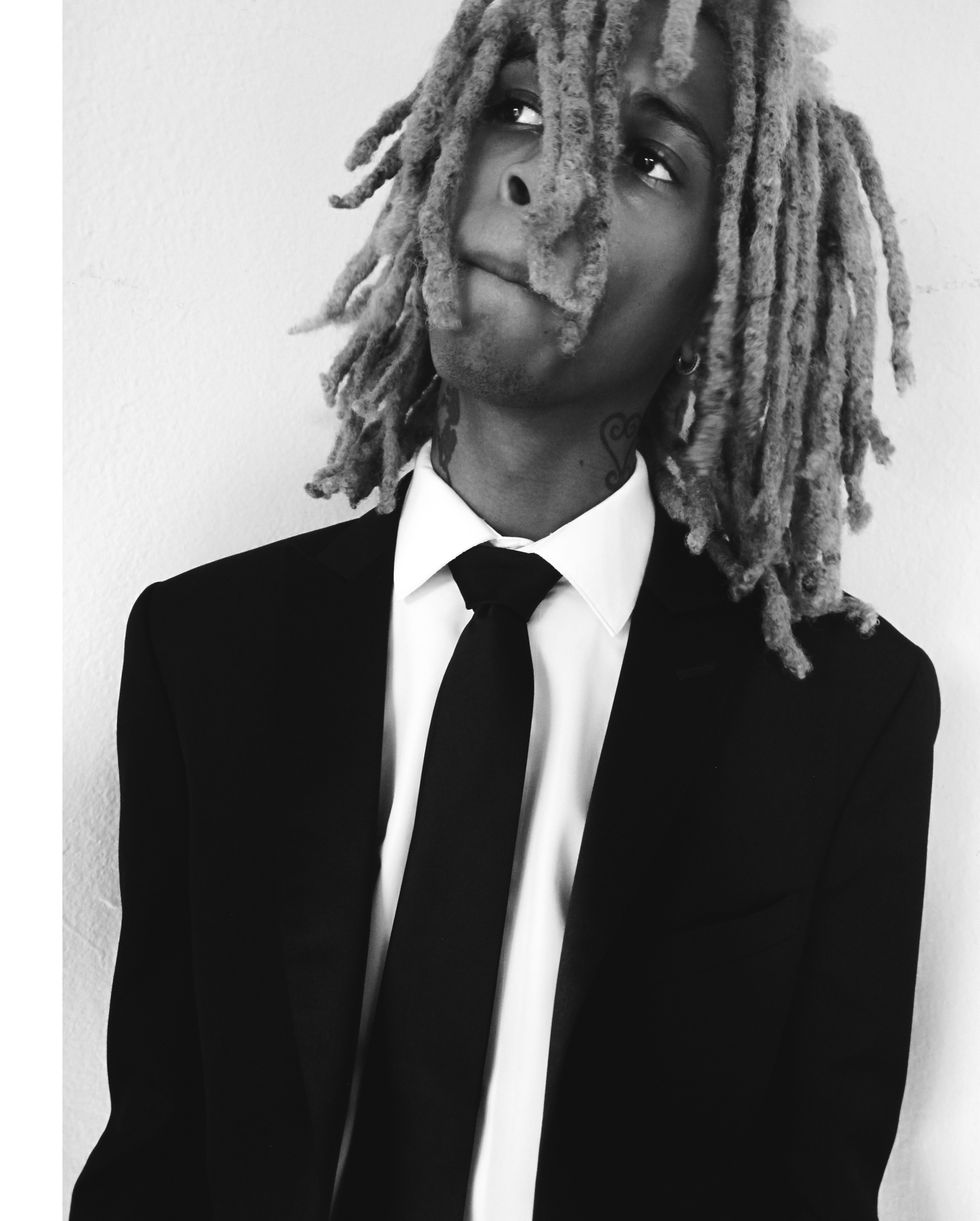
You started out producing before stepping in front of the mic as an artist. How do you think producing has shaped the way you approach songwriting and presenting yourself?
Producing really helped me lock down rhythm and melody — understanding what sounds right on a beat and how vocals can sit on top of it. I learned that beats need space so an artist can actually make a song out of them. When I started rapping, I already knew what kind of beats I wanted to be on, and I had the ability to make them myself. That was a huge part of my development, because I wasn’t just learning how to rap, I was shaping the whole sound around me.
I feel like your music and visuals are really intertwined. Are there any unexpected movies or TV shows from the 2000s that stuck with you and shaped your sound or aesthetic?
Definitely. A big one was Chowder, and later The Amazing World of Gumball. If you look at the FunHouse and Pretti covers, it’s not just drawings — there are patterns and textures mixed in, kind of like how Chowder was animated. His clothes would be a still picture while he moved across the screen. That type of animation really stuck with me. I think about music very visually. When I hear a beat, I get inspired by images or memories from my past. A lot of times, that inspiration came from cartoons — anything on Cartoon Network, older Toonami shows, anime. I recently got more into anime and realized I wanted to do something that feels out of this world. When your influence comes from things that aren’t real, it pushes you to find new ways to explain them.
What was your headspace while making FunHouse Deluxe?
That project was really me being influenced by real life. Whatever was happening to me at the time went straight into the music. I could only rap about what I was going through, and I tried to explain it in ways that made sense to me. That’s why Fun House Deluxe feels so personal — I’m basically telling you events beat for beat, giving my side of things in a way people don’t always do now. My headspace was all over the place. There was a lot happening that year, and it made the music even more personal because I didn’t have the option to talk about anything else. Sonically, it shaped how the songs came out too. On some tracks I’m almost playing a character — still talking about real situations from my life, but sometimes from another perspective within the story.
I read that you worked at Food Lion while you were producing and making music. Are there any moments from that time that really stand out to you?
Yeah, plenty. When I worked there, I was also making music on my own — still working on Pretty at the same time. At Food Lion, I used to work the floor, stocking produce like lettuce, radishes, all that. Every day I had to refill this banana kiosk. One time, these two kids ran in and knocked it over on purpose, and I had to put all the bananas back. It felt like something out of a Cartoon Network episode. There were nights they kept me for hours past closing because of stuff like that, having to clean up huge messes. As for Discord, I remember being at home making beats constantly. Around the time I made “Miley Cyrus” and “Pizza Time,” it felt insane — like I was in a blur, working nonstop.

You’ve said you want your music to be more colorful than the typical underground aesthetic. How do you translate that visually and sonically?
It’s all in the approach. Sonically, there are certain melodies, pitches, and frequencies that can make a person feel a certain way. A lot of my music sits in that upper register where you’re more likely to have a positive reaction to it. Visually, it comes down to the selection of colors. I always want things to be very colorful, even if it’s a darker album. It’s easy to just go black-and-white, but I like challenging the eye. Some people say my covers are abrasive, but I think they’ll age well — like a picture someone drew that still looks good years later.
You’ve said you don’t want to be ‘mysterious’ like a lot of underground rappers. What do you want fans to know about the real you?
Most of my time is just spent at home. I go out with my close group of friends, but I don’t really do much. A lot of people feel like they need to create a struggle to have something to talk about in their music, but life can just be regular — and that’s fine. If it’s real life, you might as well talk about it. So for me, I just play games, spend time with my friends, talk to my family every day. I’m a regular person, an avid smoker, and that’s really it.
Where do you want Prettifun to be in five years?
In five years, I hope I’m on a big enough stage to run my own festival — especially in Charlotte, since there’s not much of a music scene here for the kind of music I make. I’d love to build that support. I also want to have multiple projects out, a lot more producer credits, and to be working at a much bigger level than I am now. I know I can do it, and five years feels like the right timeframe to get there.
Photography by sinistermind
Related Articles Around the Web
MORE ON PAPER
Entertainment
Cynthia Erivo in Full Bloom
Photography by David LaChapelle / Story by Joan Summers / Styling by Jason Bolden / Makeup by Joanna Simkim / Nails by Shea Osei
Photography by David LaChapelle / Story by Joan Summers / Styling by Jason Bolden / Makeup by Joanna Simkim / Nails by Shea Osei
01 December
Entertainment
Rami Malek Is Certifiably Unserious
Story by Joan Summers / Photography by Adam Powell
Story by Joan Summers / Photography by Adam Powell
14 November
Music
Janelle Monáe, HalloQueen
Story by Ivan Guzman / Photography by Pol Kurucz/ Styling by Alexandra Mandelkorn/ Hair by Nikki Nelms/ Makeup by Sasha Glasser/ Nails by Juan Alvear/ Set design by Krystall Schott
Story by Ivan Guzman / Photography by Pol Kurucz/ Styling by Alexandra Mandelkorn/ Hair by Nikki Nelms/ Makeup by Sasha Glasser/ Nails by Juan Alvear/ Set design by Krystall Schott
27 October
Music
You Don’t Move Cardi B
Story by Erica Campbell / Photography by Jora Frantzis / Styling by Kollin Carter/ Hair by Tokyo Stylez/ Makeup by Erika LaPearl/ Nails by Coca Nguyen/ Set design by Allegra Peyton
Story by Erica Campbell / Photography by Jora Frantzis / Styling by Kollin Carter/ Hair by Tokyo Stylez/ Makeup by Erika LaPearl/ Nails by Coca Nguyen/ Set design by Allegra Peyton
14 October
Entertainment
Matthew McConaughey Found His Rhythm
Story by Joan Summers / Photography by Greg Swales / Styling by Angelina Cantu / Grooming by Kara Yoshimoto Bua
Story by Joan Summers / Photography by Greg Swales / Styling by Angelina Cantu / Grooming by Kara Yoshimoto Bua
30 September
